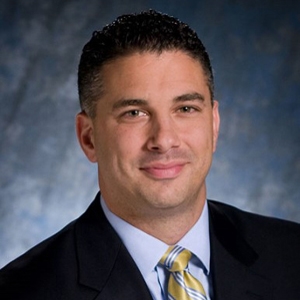Action Items for Employers Who Want to Impact Retirement Outcomes

The most recent Employee Benefit Research Institute (EBRI) Retirement Confidence Survey credits retirement benefits with higher retirement confidence levels and helping workers accumulate more savings. The survey delivers another important message – more needs to be done for workers to achieve good retirement outcomes:
- Confidence in having enough money to retire remains low
- Less than half of workers surveyed have completed important planning tasks like calculating their retirement savings needs
- Almost one in five workers say their retirement age has changed, and it's typically a date farther in the future
Because workers rely on 401(k) plans as their major source of retirement income, it's even more critical that employers help them do a better job preparing for the future and making the most of their retirement plan benefit. Here are some ways, based on the EBRI data, employers can take action to impact their employees' retirement outcomes:
EBRI: Access to a retirement plan makes a big difference.
When workers have access to a retirement plan, they:
- Are more likely to have saved for retirement than those without a plan (88 percent vs. 21 percent)
- Are very to somewhat confident about having enough money for a comfortable retirement (74 percent vs. 39 percent)
- Have saved more than $25,000 (61 percent vs. 11 percent)
Take Action: Employees with an employer-sponsored retirement plan are a step ahead of those that do not have access to one. Providing your workforce with a retirement plan gives them an important employee benefit they value.
EBRI: Confidence in savings and planning is low.
More than a third of workers reported they are not confident that they will have enough money for a comfortable retirement. More think they will have enough for basic expenses, but just 22 percent are very confident they can afford medical expenses and long-term care (16 percent) in retirement.
Confidence in financial preparations is also lacking -- about a third (each) are not confident they are doing a good job preparing, and in their ability to make critical decisions like when to take Social Security and how to choose health insurance on their own.
Take Action: Make available retirement planning resources and modeling tools that estimate future retirement savings amounts needed for a comfortable retirement, as well as health and long-term care costs in retirement. Articles and workshops on topics like taking Social Security benefits and choosing health insurance in retirement can provide much needed planning information. For best results, these programs should be easily actionable and include steps the individual can take to get better results.
EBRI: Debt and cost of living expenses impact saving.
It seems debt is more of a problem, with more workers naming it a major or minor problem and fewer who say it is not a problem. Cost of living and day-to-day expenses were overwhelmingly (40 percent) the reason workers say they don't save more, and workers say they will have to save more later, live on less, work during retirement, or retire later if they have not saved enough.
Take Action: Help employees gain control over current financial demands with financial wellness initiatives that teach them how to better manage their money today and save adequately for the future.
EBRI: Help with retirement preparations is needed.
Survey results show retirement planning help is much needed:
- Less than half of workers have calculated their retirement savings needs and 22 percent do not know how much they should be saving
- Just 40 percent have estimated their Social Security benefit
- Only 27 percent have calculated how much may be needed for medical expenses in retirement
Take Action: Talk to your plan provider about available educational resources and programs you can use with participants. Online planning tools, retirement saving gap reports, workshops, communications and articles are just a few of the ways service providers can help you make information available for participants that can help them make better decisions about their retirement.
EBRI: The retirement age is changing.
Long-term EBRI survey results show the planned retirement age trending upward, particularly among those who expect to retire after age 65. This number has soared from 11 percent in 1991 to 37 percent in 2016. In addition, 6 percent of workers say they never plan to retire and 67 percent plan to work during retirement.
Take Action: Implement programs that really work, like automatic enrollment, automatic deferral increases, and target retirement date investment options. These programs can have a tremendous impact because they get workers saving sooner, longer, and potentially more. Investment options like target date funds give participants an easy way to invest their savings according to a planned retirement date. Workers who are financially prepared can retire when they're ready.
Offering a retirement plan, designing it well, and engaging participants in the planning process can help them overcome common retirement planning challenges, and be more confident and better prepared for their retirement.
SOURCE: 2016 Retirement Confidence Survey, Employee Benefit Research Institute (EBRI). March 2016.



